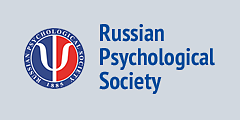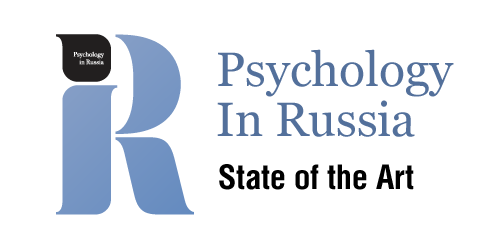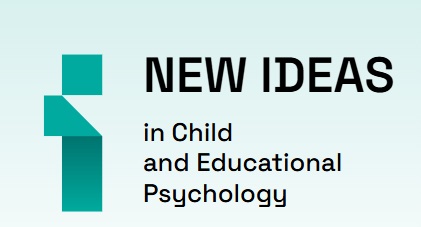Luniakova, E.G.

Senior Researcher at the Laboratory of Perception, the Faculty of Psychology, Lomonosov Moscow State University.
-
Face Representation: Percept or Concept? Key Factors in Representation FormationLomonosov Psychology Journal, 2025, 4. p. 57-83read more336
-
Background. Numerous experimental studies indicate high accuracy in recognising familiar faces, which is commonly attributed to the formation of generalised face representations. However, it remains unclear what specific information is generalised in these representations and which factors influence their formation.
Objective. The scope of the article is to review and systematise findings from modern research on the factors affecting the formation of face representations.
Methods. A theoretical review and analysis of studies published between 2015 and 2025 was conducted. Literature search was performed in the Web of Science, Scopus, PubMed, and eLibrary databases using the following keywords: "face recognition", "face representation", "face learning", "perceptual learning", "variability", "social learning", "familiar faces", "familiarity".
Results. The analysis of the literature reveals two main approaches to studying the formation of face representations, each emphasising different factors. Within the first approach, perceptual information — specifically, the idiosyncratic within-person variability of a face — constitutes the core content of its representation. The primary factor shaping this representation is the perceptual variability in the observed stimuli. Experimental evidence supports the positive impact of variability in photographs of memorised faces on subsequent recognition — provided certain conditions are met, particularly the availability of cues for the correct interpretation of variability as a within-person change. According to the second approach, the content of face representations is not limited to within-person variability: supplementary knowledge about a person (e.g., name, profession, behaviour) also contributes to generalised representations and may be integrated into their content.
Conclusions. Research findings suggest that the form and content of face representations evolve with familiarity, transforming from a "percept" into a "concept". This perspective challenges traditional stage-based models of face processing, prompting a shift toward levels-of-processing frameworks. This approach enables a more comprehensive investigation of face perception within the context of human social cognition. In this regard, unexplored factors — such as the perceiver's active engagement and their interpersonal attitudes — appear particularly promising for future research.
Keywords: cognitive psychology; face perception; face recognition; representation; face memory; perceptual representation; conceptual representation; perceptual variability DOI: 10.11621/LPJ-25-41
-
-
Eye Movements in the Task of Visual Search Depending on the Verbalizability and Symmetry of StimuliLomonosov Psychology Journal, 2023, 4. p. 88-111read more1671
-
Background. Visual search is considered today as an active process, usually implemented with the participation of eye movements. Modern search models assume the influence of both stimulus and cognitive variables on its characteristics and effectiveness. However, in research, as a rule, only one type of variables is controlled, which requires the creation of new experimental paradigms that allow studying the influence of both types of factors and their interaction.
Objective. Investigation of the influence of factors of verbalizability and symmetry of the target stimulus on the effectiveness and speed of its search and characteristics of search eye movements.
Methods. The created stimuli were identical in basic stimulus characteristics (color, shape, size, slope, number of elements) but differed in the symmetry of configuration and the level of verbalizability. An intragroup experimental plan was used. Eye movements were recorded in the process of visual search with the SMI HiSpeed 1250 eye tracker.
Sample. The total sample of the study consisted of 48 participants: 18 people (10 men, 8 women, average age — 20) — at the stage of assessing the verbalizability of stimuli; 30 people (6 men, 24 women, average age — 20) — at the main stage.
Results. None of the factors affected the effectiveness of visual search, it remained at a high level. In the absence of the target stimulus in the matrix, the search for symmetrical targets with verbalizability was completed faster, the search for asymmetric stimuli with low verbalizability was the slowest. Both factors influenced the features of searching eye movements: the search for “simple” (symmetrical and/or highly verbalizable) stimuli was characterized by shorter fixations and wide-amplitude saccades than the search for “complex” targets. ANOVA showed that there is no interaction between the factors of verbalizability and symmetry.
Conclusion. The results generally support the hypothesis about the influence of symmetry and verbalizability on the visual search, testifying in favor of their independent influence on the dynamics of search eye movements.
Keywords: visual search; eye movements; fixation; saccade; eye tracking; stimulus configuration; verbalizability; symmetry DOI: 10.11621/LPJ-23-40
-
-
Perception of facial symmetry in upright and inverted facesLomonosov Psychology Journal, 2023, 1. p. 54-78read more2238
-
Background. The uniqueness of human face perception mechanisms and their variability has become a subject for extensive investigation and wide discussion in the recent decades. While now the concept that human face is perceived as a whole is taken as a fact, the same cannot be said about the structure and methods to measure holistic processing. In the present study the factor of symmetry is investigated as one of the possible aspects of configural processing of facial perception.
Objective. The aim of the study was to apply the inversion method to the investigation of how distortion of facial configuration perception impacts the rating of its symmetry/asymmetry.
Sample. 54 participants (24 female and 30 male) aged 18 to 68 (mean age 26) took part in the study.
Method. An intra-individual experimental design was used. Participants rated asymmetry of normally oriented and inverted face-stimuli on a five-point scale. To set the symmetry level, left eye and/or mouth regions were rotated around their fiducial points, there were three rotation angles for each feature region. Zero asymmetry faces were created by blending halves of normal and mirror images of the sample face-stimulus. The mean asymmetry subjective ratings were submitted to repeated measures analysis of variance and paired samples t-test.
Results. The study revealed significant differences in the asymmetry ratings of upright and inverted faces: normal upright faces with rotated features were rated as more asymmetric compared to inverted. Thus, we may conclude that symmetry perception is affected by inversion. It was also revealed, that the effect of the eye region and the lips region rotation were not equivalent: the higher the level rotation of the eye area was the more significant the difference between the rates of upright and inverted faces was, while rotation of the lips area did not result in higher difference between the rates.
Conclusion. The observed face-inversion effect in the perception of symmetry in facial stimuli suggests that (a)symmetry is a component of holistic (configurative) processing of human face perception. At the same time, the contributions of individual features to the overall facial configuration may differ.
Keywords: face perception; inversion effect; holistic processes; perception of the objects symmetry DOI: 10.11621/vsp.2023.01.03
-









